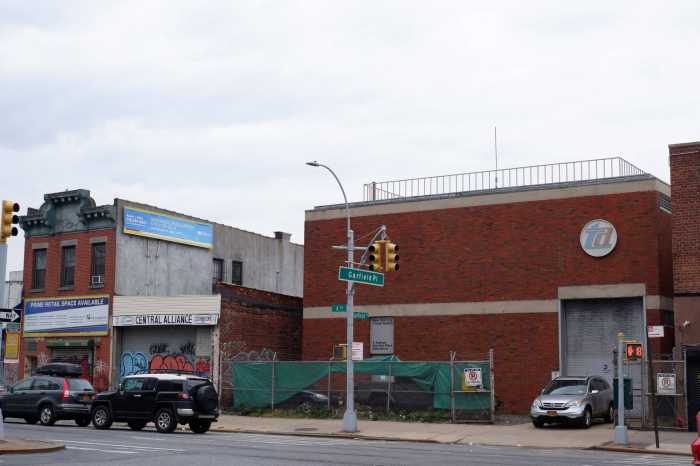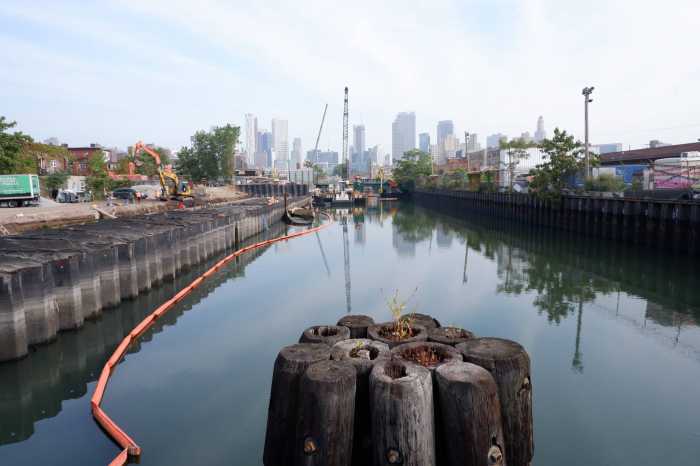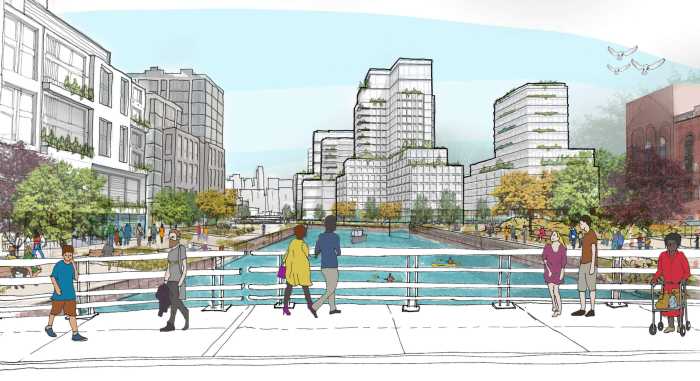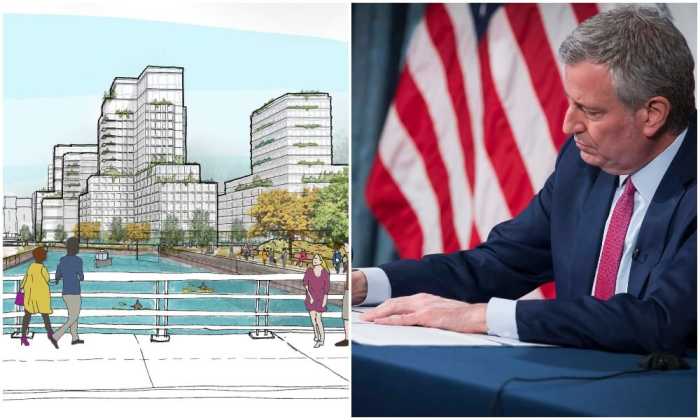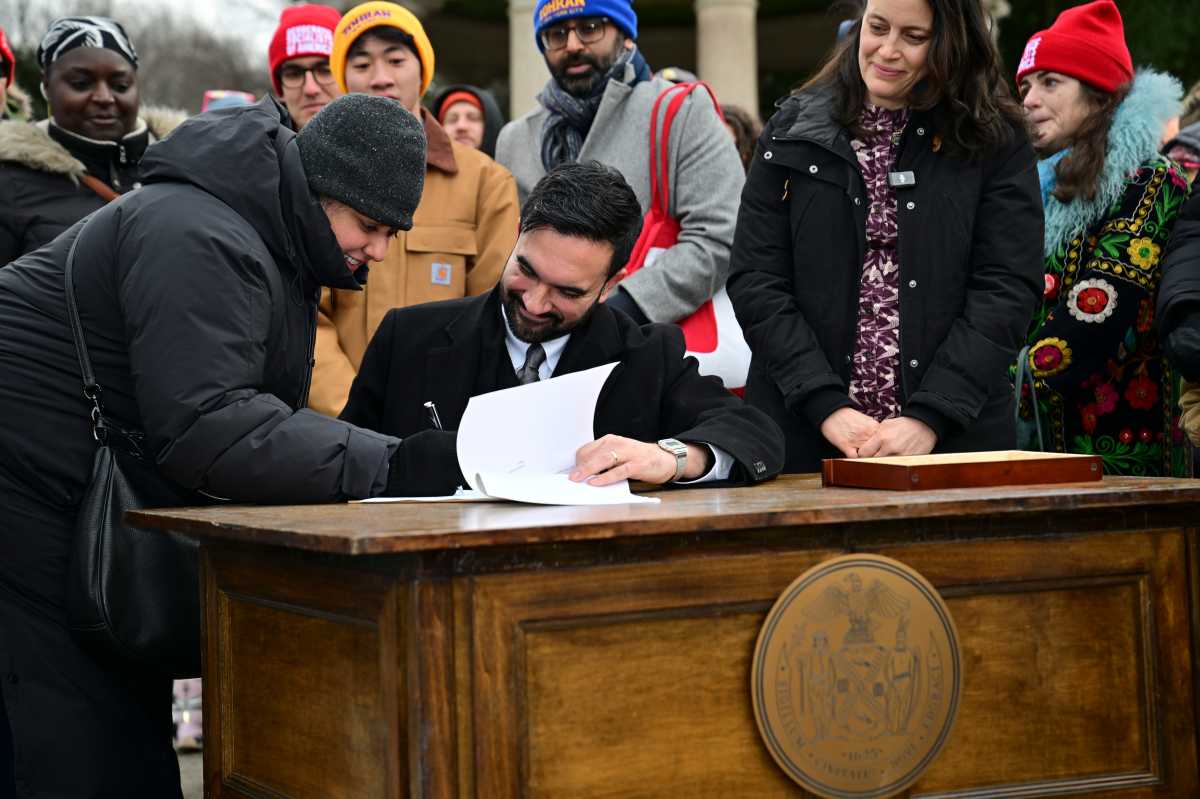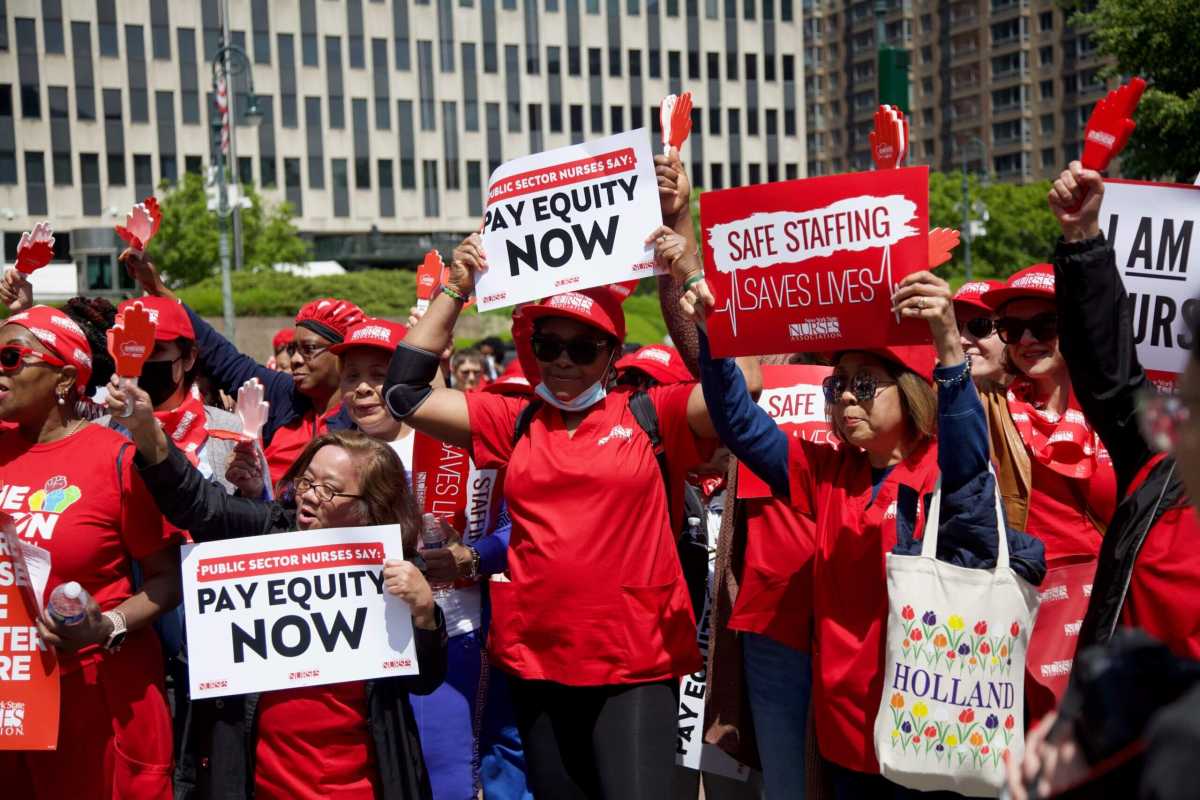The hotly-contested Gowanus rezoning reached a new milestone on Wednesday, as a City Council sub-committee voted to approve the neighborhood-wide land use changes.
The vote brings the plan one step closer to reality, and comes after city planners reached a long-awaited agreement with local stakeholders on the terms of the upzoning, which would dramatically change the makeup of the area with thousands of new apartment units.
Councilmembers Brad Lander and Stephen Levin, who represent the 82-block chunk of Gowanus set to be upzoned, announced on Wednesday that they, along with Community Board 6 and other community groups, had reached an agreement on the terms of the rezoning with Mayor Bill de Blasio.
“Debates about development are not easy, but I am truly proud of the way we’ve engaged them here,” Lander said in a statement. “Together, we are setting the stage for a more diverse, more sustainable, thriving, creative neighborhood that will welcome new residents while improving and preserving the ability of public housing residents, artists, small businesses, and neighbors to continue to thrive here for generations to come.”
Last-minute negotiations delayed the council’s Subcommittee on Zoning and Franchises vote by a day, but they ultimately agreed to give the green light after the so-called “Points of Agreement” plan was agreed upon.
The proposals, critically, include parts of the three core demands of the GNCJ, including full upfront funding capital for repairs at two local NYCHA complexes, net zero combined sewer overflow increase, and the creation of an independent oversight committee to supervise the rezoning.
Both Levin and Lander have said those conditions needed to be included in the project before they would vote to approve it.
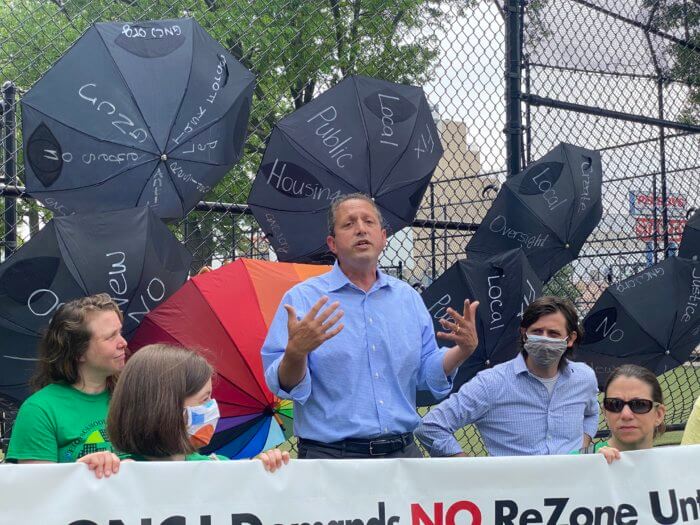
The city agreed to fully fund renovations of all public housing units at Gowanus Houses and Wyckoff Gardens — more than 1,600 apartments in total, at an estimated cost of about $200 million. It’s more than the city was prepared to offer last summer, but falls short of the more than $274 million NYCHA estimates is needed for the long-neglected repairs.
City officials will meet regularly with tenants throughout construction, and formally committed to reopening the community centers at both complexes.
“We’re grateful today for everyone that had a part in this, in helping us to get here,” said Theresa Davis, vice president of the Gowanus Houses Tenants Association. “It’s not everything we wanted, but it’s that they did show up, that they did stand out and help us.”
In addition to apartment renovations, which will include replacements of kitchens, bathrooms, plumbing and electrical elements, the agreement says the city will expand the Mayor’s “Action Plan for Neighborhood Safety” to Gowanus and Wyckoff Gardens, bringing an annual $2 million in programming to reduce crime through youth and social services.
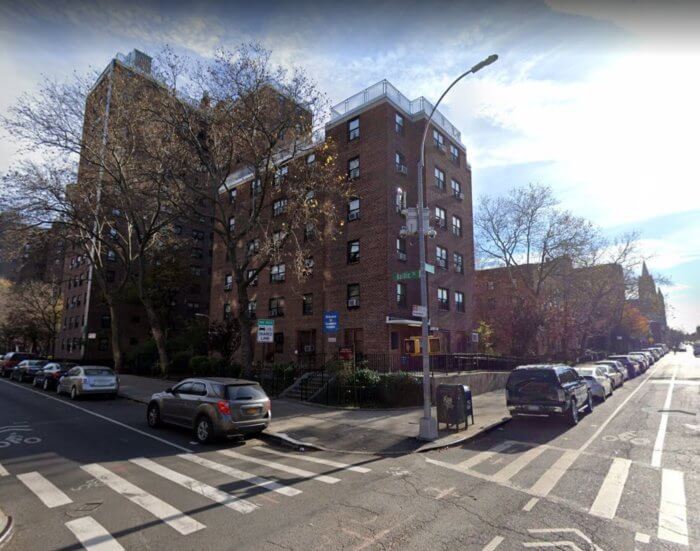
About $1 million per year will be dedicated to workforce development and job training for the neighborhood, especially for NYCHA tenants.
Net-zero CSO impact has been a sticking point as the federal Environmental Protection Agency continues their Superfund cleanup of the Gowanus Canal. Most of the city’s sewers are combined, and handle sewage and stormwater in the same system. During heavy rainfall, storm drains overflow and send stormwater and untreated sewage into the streets and, in Gowanus, into the heavily-polluted canal.
In the POA, the city says the Unified Stormwater Rule, which will take effect before construction begins and requires all new construction to include stormwater management measures, will reduce CSO discharge and manage flooding. In addition, the city has committed to a $174 million upgrade to sewers on the flood-prone Fourth Avenue, following $53 million spent on high-level storm sewers on adjacent streets.
Activists and elected officials alike have raised concerns about the rezoning’s impact on flooding in Gowanus. While the draft environmental impact statement said the incorporation of water retention and storage would zero out the presence of 8,000 new apartments, the EPA raised concerns about outdated information and inconsistent math used by the city.
Approved alongside the rezoning was the separate but necessary Owl’s Head CSO tank, the second of two large retention tanks the city is required to build to accompany the federal cleanup. The tanks will store a combined 12 million gallons of stormwater when completed, reducing the amount of CSO overflow that will flow into the canal during heavy rainfall and hopefully keeping the newly-scrubbed channel free of more sludge.
But the city has been heavily criticized for delays on the tanks, which are not expected to be completed until after the EPA finishes dredging the canal and capping it with clean fill.
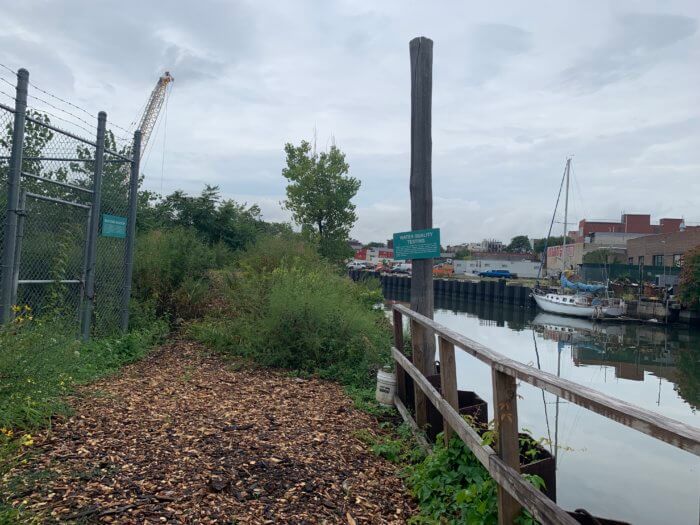
“We’re really celebrating some hard-fought wins here today,” said Diana Gruberg, landscape director at the Gowanus Canal Conservancy, including a comprehensive examination of flood conditions in Gowanus and Red Hook.
“This is the hydrology study that the community has been asking for for years,” she said. “And then a commitment to infrastructure improvements at Fourth Avenue and Carroll Street, where we’ve seen devastating flooding.”
Still a fairly industrial neighborhood, Gowanus has long been home to a thriving arts community, but rising rents have some artists on edge about their future in the area. Last month, during the city council’s marathon hearing on the rezoning, Arts Gowanus announced that they had been working with Lander on a Community Benefits Agreement which would have some developers reserve space in their buildings for affordable studios.
The final CBA is an agreement with ten developers across more than a dozen sites to provide 150 subsidized studios, including a handful of more-affordable spaces set aside for low-income artists, Arts Gowanus said in a release, and a 2,000-foot community arts center which will serve as an exhibition space and the new office for Arts Gowanus. Even if the agreed-upon properties or buildings are sold, the CBA, which went into effect on Nov. 10, will ensure the affordable studios and art center remain in operation.
“We are thrilled that this rezoning will allow artists to continue to thrive in Gowanus,” said Arts Gowanus executive director Johnny Thornton. “We have been actively fighting artist displacement in the community for years and there is a great need for affordable artist workspaces.”
The final demand by GNCJ, which was echoed by CB6 and Adams in their approval, was the creation of an independent monitoring taskforce to ensure the promises made by the city and developers are honored during the long process of rezoning once it begins.
That task force will be supported by a third party and will be composed of elected officials, CB6 members, NYCHA residents, and community organizations, and “all relevant city agencies,” have committed to regular check-ins with the task force as part of the POA.
Developers building along the canal will be required to build and maintain a 40-foot, flood-resistant public greenway, and the city has committed to building green spaces at the site of each of the two retention tanks and adjacent to the Smith and Ninth Street subway station. In an effort to retain Gowanus’ existing character, the POA requires that midblock areas be reserved for commercial and industrial use – with “modest” additional development allowed, and a new use group, “Gowanus Mix,” will create 300,000 square feet of space for arts, light industry, and nonprofits.
In addition to the 950-unit, all-affordable Gowanus Green slated to be built at Public Place after remediation of the site is completed, the council approved an application to amend a prior Urban Development Action Areas Project, which will allow the construction of Mercy Home, an all-affordable housing development on 4th Avenue. The city expects 2,000 additional affordable units to become available as the rezoning progresses under Mandatory Inclusionary Housing requirements.
“We’re not backing down, and we’re looking forward to working with the Adams administration and incoming council members to make sure that all of these commitments are followed through,” said Fifth Avenue Committee executive director Michelle de la Uz.
Since the committee voted “approve with modifications” on several of the rezoning actions, the modified proposal will head back to the City Planning Commission for review, and will return to the council for a full vote on Nov. 23.



